The body has many “fallback” or alternative pathways - - - don’t forget that!
An item of note: Vitamin D has its own delivery truck as does Vitamin A and so does Calcium. Now, even if you have the delivery trucks, there has to be something to carry. Call it a chemical package.
Remember: Hormones are made from LDL
Here is some more trivia, Vitamin D production naturally is reduced with age. For instance, at age 70 it’s been stated that one makes 10% of the D you made at 17. My my my! Same goes for CoQ10, maybe not that dramatic but there is a reduction.
Additional item of note: Vitamin A is made from Beta Carotene. It appears that A is made in proportion to the D and other fat-soluble vitamins “floating around”.
Tip: Some folks, have a vitamin A metabolism issue and this needs to be checked via genetic screen or some really good blood work sleuthing. Don’t assume you are “A” deficient and just start taking “A”. TEST!
Idle thought: if gut bacteria are so critical and children get their gut bacteria from their mothers at vaginal birth one might consider looking at CAD vs C-sections vs Vaginal Birth or regardless of birth method - - - - do the hormones of the woman dictate a preferential atmosphere for specific bacteria in the fetus and baby? This in turn prompts the question: “are the gut bacteria different in males than females at birth?” The author suspects so.
So how does this CAD start assuming that your gut bacteria are not “doing their job?”
Key Tip: The artery is in reality, a pipe in a pipe in a pipe and this CAD “stuff” goes on in between the walls of the pipes, not outside the artery walls where the blood is.
Please read closely: After initial insult (aka damage or “critter” invasion), the macrophages jump in and come to the rescue (macrophages are the repair crew and macrophage is a catchall term). Once done with their duties, if they do not experience apoptosis (cell death) or they do not leave the initial insult area and go back to the liver for reprocessing - - - they end up “hanging out”. This is not a good thing!
Here is where the party gets interesting:
The net result of not dying or leaving the inside of the pipe, the macrophages are transformed into biological “things” called Foam Cells (FCs) which “hang out” (the body’s version of the “Walking Dead”).
Why do more FCs show up over time? Well, during this transformation, there appears to be warning chemicals given out such as Interleukins that basically say, “OMG these “dudes” don’t belong here and if they stay here the end result is not good” (think about it as fish or visiting relatives after about three days).
A quick recap: At this point we have macrophages morphing into FCs. This morphing stimulates even more macrophages to “join the party” as this morphing is read by the body as an infection. One now has a biochemical “pig pile” going on. The body then responds by sending in even more macrophages (the cavalry) along with their “buddies” LDL & beta-HDL (drones) so as to get rid of these “dudes”. The body is assuming (you know what assumptions lead to) that there is sufficient Vitamin C, Vitamin D, Fetuin-A, Magnesium, and Free T3 and APO A-1 floating about AND the LDL and the HDL are properly coated with the right stuff like K, CoQ10, E, and micro RNA.
Here is the scary part:
If the macrophages and the LDL/HDL don’t do their job on these FCs, the “fresh” macrophages are transformed into even more FCs and the FCs in turn gobble up the LDL but not the HDL. This is why “cholesterol” accumulates in the artery wall, because it is in the FCs (think of the FCs as demanding, “that I want you LDLs in my belly”).
The HDL is still trying to “kill” the FCs using a technique called “Reverse Cholesterol Transport” but that too relies on first having enough beta-HDL in the serum and then that beta-HDL has sufficient CoQ10, MK-7, E, and micro RNA resident on or coating the beta-HDL and on top of that there is sufficient APO A-1 floating around to help transform the beta-HDL to HDL thus allowing for transport back to the liver for reprocessing.
In the process control world that I live in, this is often referred to as a “busy system”. For the sake of levity, one could describe this whole process, when there is not sufficient chemistry, as the Key Stone Cops teaming up with Laurel and Hardy Abbot and Costello and the Three Stooges (throw in the original cast of Laugh-In and SNL and Blazing Saddles for good measure) all at the biochemical level. I ask, “What could possibly go wrong?”
But Wait There’s More!
While this biochemical “pig pile” is going on, the FCs are just not happy to “hang out” but, start chemically agitating the vascular smooth muscle cells, (VSMCs), which in turn start proliferating uncontrollably and dying at the same time. This proliferating of VSMCs give off signals that they are being attacked as if by a “critter”. The macrophages are the cavalry coming to the rescue one more time. You got it, even more macrophages and the associated LDL and this downward cycle continues.
The growing VSMCs give off chemicals, one of which is Tumor Necrosis Factor alpha (TNF-a) which is like what is in the saliva of a termite. This chemical dissolves the bonds of the Epithelial Layer (EL) of your pipe much like termite saliva enzymes dissolves wood. When the bonds are weakened or broken the VSMCs break through the wall and enter the blood stream and now you have a cascade of events that lead to a clot.
It doesn’t end here.
If the VSMCs don’t produce enough TNF-a (for discussion sake) and/or the EL is thicker (read as tougher) than normal, what occurs is that the VSMCs continue to grow and put pressure on the EL. This pressure caused by growing VSMCs induce the narrowing of the artery. Eventually closes it off or in some cases, think of it as pumping up a bike tire - - - too much air pressure and the tube “pops” - - - yes, an arterial blow out which does happen.
Here is the real fun:
The dead VSMCs leave a trace of Calcium as their genetic expression is changed by the FCs. The Calcium is in the form of hydroxyapatite (but not exactly like bone but close). Think of it as soft and squishy bone as compared to real bone. This trail is thus visible via CT type scanning equipment. This plaque or calcium score is then used as a surrogate for the determination of the degree of arteriole disease and as an indicator of the potential for a major cardiac opportunity (a heart attack) (yes, this phrase was used at a prestigious clinic).
Tip: if your score keeps increasing you have “stuff” growing and that is not good
Tip: there is no such thing as soft plaque. Plaque is plaque when its seen by a scan.
This “squishy” important to note as this is where Fetuin-A and Magnesium play a big role. More about that later.
To summarize the above “race to put out the fire of CAD”:
v ABCA-1/ABCG-1 on the surface of the macrophages/FCs is activated or up-regulated by FreeT3
v “D” riding on its carrier protein shows up due to the activation of ABCA-1/ABCG-1
v The “D” in turn up-regulates the dp-ucMGP resident on the cell surface of Macrophage/FCs
v Beta-HDL shows up with MK-7 attached and the MK-7 then carboxylates the MGP
v Carboxylated MGP then allows for the beta-HDL to start sucking out the lipids from the lipid core (reverse cholesterol transport) with help from CoQ-10 & miRNA. Think of beta-HDL as a biochemical mosquito.
v The miRNA appears to go in and kill the macrophage/FC or at minimum disrupts its metabolism and CoQ10 helps stick the beta-HDL to the cell surface.
v Sufficient Magnesium needs to be present so as to “loosen up” the Calcium resident in the VSMC streak hydroxyapatite. Kinda like the role Magnesium plays in loosening up Kidney stones.
v Apparently carboxylated MGP on the VSMC then upregulates or stimulates the Fetuin-A to go in and remove the Calcium from the area of the dead VSMC.
v Fetuin-A now carrying the Ca (which the author terms “Reverse Calcium Transport”), has two options to deal with the Calcium in the efflux mode. The first is dropping off the Calcium onto the bone or going back to the liver to be reprocessed (Fetuin-A has a half-life of between 1 and 2 days - - similar to HDL).
v Carboxylated MGP then allows for or stimulates or upregulates either the VLDL and LDL or both to go in and “kill” the Macrophages/FCs Via K-1/MK-(x) - - -following the “cancer model” - - - Autoschizis - - - - possibly “D & C” are also involved.
v Eventually, the “dead” VSMCs and the other cellular trash are reabsorbed over time.
v One hitch is your APOE status and the associated clearance rates of the VLDL, HDL, and LDL etc. The APOE 4/4 4/3 4/2 have a slightly different challenge than the APOE 3/3 3/2 2/2
The above has led to:
An Engineer’s Definition of CAD:
Heart Disease Appears to Be:
Insufficient Carboxylation of Matrix Gla Proteins resident on Macrophages, Foam Cells, & VSMCs
Caused or Induced by
Insufficient MK-7 & K-1 et.al.
Resident on or in
Sufficient Amounts of LDL, HDL, and VLDL Particles
Impacted &/or Influenced by, in sequence with or in parallel to
Free T3 - D - Magnesium - CoQ-10 - Fetuin-A – miRNA – E - C
And Oh By The Way: some folks say calcified arteries are good for you. Without getting into the details, as an engineer I can safely say the following:
The heart is a positive displacement pump. As such when it pumps the shear sensitive “stuff” in the fluid know as your blood it has to do it in a way that does not causes shear or at least minimizes shear by mimicking what could be best termed as laminar flow (think laminar flow as a leaf floating on a brook). Example of uncontrolled shear is Atrial Fibrillation (AF). So as to help move the fluid along, the pipe or hose or tube or whatever you want to call it must expand and then contract with the pressure wave so as to uniformly move the fluid down the pipe with the least amount of shear possible on the “stuff” in the fluid and at the same time minimize turbulent flow (think of this as white-water rafting). Simply put a stiff pipe promotes turbulent flow and that is not good (think of the concept of water hammer).
Now for those that would like to get “lost in the weeds” of CAD, buckle your seat belts, you are now going to experience what the author refers to as tips, tricks, and trivia in sort of a bullet point format and not in any real order
Concept 1:
Folks have been asking for a protocol of some sort. Let’s make sure we all understand this factory called the body. IT IS YOUR BODY!!!! & YOU have to “dial your body in”
There is no such thing as a “magic CAD bullet”. CAD resolution is a life style commitment to a chemical juggling act and you are in charge So
Lets start here:
The 50,000 foot view of the engineering steps to success of arterial therapy is as follows:
Measure what’s in your pipes first then Kill the macrophages and slow the growth of the FCs/VSMCs then “Kill” the FCs/VSMCs then “Clean out” the plaque (thus restoring arterial range of motion) then Prevent reoccurrence
Note: In the ideal world all four objectives occur at the same time. But we are not that fortunate. It takes time. From the author’s experience about 6 months to a year to see tangible results.
Note: If you can find a 320 slice machine to measure your plaque or an EBT scanner. One should consider a scan every year in the opinion of the author.
Now that we have the scan done, now it’s time to do some base line testing. Don’t get alarmed as your issues are generally found in these tests so, do this to rule in and rule out what you should focus on. Are they pricey? Yup. But, so is a cardiac opportunity. Hopefully you have these tests done with your health coach. If not, you have “google” to fall back on.
Suggested Baseline Blood Tests:
Vitamin A
Vitamin D
Vitamin E
Beta Carotene
Vitamin C
Vitamin K-1
Uncarboxylated Osteocalcin (aka vitamin K assay)
Homocysteine
HbA1c
C-reactive protein (CRP)
Lp(a)
ApoB-100
APOA-1
PIVKA-II, (measures proteins induced by vitamin K deficiency)
MMP-9
MMP-2
Red Blood Cell Magnesium
Iodine
Manganese
Arsenic
Mercury
Selenium
Zinc
Calcium
Cadmium
Copper
Chrome
Nickel
Boron
Lead
Potassium
Phosphorous
Sodium
Chloride
CoQ10
TNF-alpha
TSH
Free T3
Estriol
Estradiol
Estrone
Insulin
Glucose (fasting)
Progesterone
Pregnenolone
Melatonin
Luteinizing Hormone
FSH
DHEA
Free Testosterone
SHBG
IL-6
Histamine
WBC by count and species
Vitamin B6
Vitamin B5
Vitamin B12
Folic Acid
LDL - - - amount, size, and number
HDL - - - amount, size, and number
Triglycerides
Allergen panel
APOE genotype and the associated other genetic issues one has on hand
If possible the Fetuin-A test (but don’t count on it)
Ok, you have the tests, now where do you start? The following is meant as a daily starting point, not an end point. This is the bare minimum.
No Junk Food/Junk Carbs
No Junk Oils: Good oils: butter, lard, coconut oil, olive oil, almond oil, macadamia nut oil, olive oil (find the real stuff).
Eat once per day (the body is designed for this per Noakes)
Drink a half to one gallon of water a day
Good night’s sleep
CoQ10 - - - in the ubiquinol form - - - 200mg (cannot take too much)
Vitamin C - - - somewhere between 2 grams per day and 16 grams per day (yes Linus Pauling and Mathias Rath are on to something) the author uses 6 grams per day.
Vitamin D - - - in Upper Michigan we have no sun - - - the author uses 10,000 ius in the summer and 20,000 ius in the winter to maintain 65 ng/ml “D” level.
Vitamin E - - - one tocotrienol (pricey but worth it)
Vitamin K - - - one koncentrated-k
Magnesium - - - 3 to 4 - - - 1300mg Magnesium Malate pills (you apparently need between 400mg and 1 gram per day of Magnesium as Magnesium) (please read the label).
Fish Oil - - - about 6 grams per day
Thyroid Med - - - some amount of Armour Thryoid so as to get your Free T3 in range. The author uses 2 grains (which is a lot). Suggest one chews it.
Now take the Fish Oil, D, E, K, and “10” with milk or a fatty food
Now the “rest of the story”
ü One possible mode of prevention of this wall breakthrough is the strengthening of the artery wall via the use of Citrulline and Arginine which are HGH stimulators. HGH in turn makes IGF-1 which helps your body repair. Citrulline induces the production of Arginine thus Citrulline is a safer way to provide the right amount of Arginine to the body. Citrulline, (3-6 grams per day) worked for the author and its measure of success was the thickness and the diameter of the aorta - - - the internal diameter stayed the same but the wall thickness increased thus the pipe became stronger. This takes time.
ü Citrulline is a good Nitrous Oxide manager via the production of Arginine from the Citrulline.
v Lysine also helps via reduction in blood pressure (read as less stress on the pipes) - - - consider 3 to 6 grams per day.
§ Now, are there genetic “oh, oh’s” that force the patient to take “A”? Yes, there are and as such this is where genetic testing comes in. As an engineer, we like to test and measure. Sure, it’s pricey but not as bad as cardiac rehab.
· Let’s clarify, the vitamin C is in the blood but like anything else you need sufficient amounts to do the “job” right. So, let’s say you have sufficient C floating around for this explanation of events that occur. The C is inside the pipe where the macrophage/FC activity is going on. The trigger is the macrophage to FC event. LDL is then called upon to team up with C and this dynamic duo attacks the macrophage/foam cell so as to kill it.
· This suspected C/LDL attack is called Autoschizis (not making this up). What is key to this biochemical “hit” is that the LDL has sufficient K-1 resident on its surface and sufficient MK-7 to “make the reaction” successful.
· Think of this as one having bullets in the gun. Granted, C leaves the body quite quickly but it appears one can help this along by taking C three times a day.
o Selenium is implicated in CAD. The author lives in a Selenium deficient area and as such takes 100mcg of Se per day. Key is to test to see what’s up with your body based on the geology you live in.
Tip on HDL: eating fats increase your HDL and to a lesser extent and be careful with this is ingestion of alcohol. The HDL bump from alcohol is on a U-shaped curve so a rule of thumb is a couple of “shots” is ok per day as long as you have sufficient “B” vitamins. Try to get your HDL level to match your D level. So, how much “B” vitamins to take? Assuming you don’t have a Folate metabolism issue, like the author, it is suggested as a good starting point about 4 Multi-B’s per day, known as “B-150’s”.
Tiny Tip: exercise and increasing one’s HDL does work but in a way I really don’t want to discuss here as it could be dangerous.
Iodine - - - do not just start taking Iodine - - - test first.
From personal experience and experimentation and over 17,000 hours of reading the peer reviewed literature, the recommended therapy should also state that HDL should be higher than 60, LDL be between 110 to 175, and TGs lower than 100.
Tip: for the most part TGs measure junk food unless you are fasting or losing weight. Fish Oil does knock them down.
More points to ponder:
Blood pressure must be low (best time to take your BP is whilst still in bed) (you don’t want to stress your pipes all the time as your pipes need recovery time also).
Magnesium and Lysine drop your BP if you take enough.
Sleep is encouraged as that is when your body fixes itself.
Work at reducing your body fat, exercise is incorporated to do this in the following simple fashion: walk one hour per day at between 60% and 65% of your theoretical heart rate (220 minus your age) example: 70 years old. 220 – 70 = 150. 150 x 0.6 – 90 beats per minute to 98 beats per minute. Not even a brisk walk.
Diet: per Noakes: 60% fat, 30% protein, 10% complex carbs or like I tell folks, get a supreme pizza and eat the topping (then give the crust to those you don’t like - - - - lol lol).
Lp(a) is reduced via Vitamin C (this is the work of Pauling and Rath and is spot on. Lp(a) appears to be the fall back position for artery healing.
C-reactive protein (CRP) is reduced via Vitamin C
Homocysteine is reduced via B vitamins especially Folic Acid.
HbA1c (Hemoglobin A1c) is lowered via diet (no junk food sugars)
Note: Vitamin D signals gut flora to liberate Calcium from the bolus.
Using good fats and fish oil the ratio of O-3 to O-6 is managed
TSH (thyroid stimulating hormone) is minimized
But wait, there’s still even more:
Stress (cortisol) is to be minimized. Learn to relax
PGE-2 (PGE stands for prostaglandin) to be minimized and PGE-1 optimized.
Cox-1 and Cox-2 are managed via Aspirin
Hormonal levels are balanced.
ApoA-1 is optimized and ApoB-100 is minimized
In some cases Doxycycline helps
Remember: Foam cells are further stimulated via insulin; thus sugar and sugar substitute intake have to be managed (read as minimized)
Tip: CoQ10 levels drop with age. CoQ10 is made in the cells to keep the mitochondria “happy” but the backup system is from the liver.
Tiny Tip: good peroxide scavenger (anti-oxidant): 1/4 tsp of Tart Red Cherry Powder
The above has led to the following postulation with regard to bacteria in the gut:
Coronary artery disease, CAD, appears to be a function of the interaction of endogenous hormones on the bacteria and villi in the small and large intestines. These hormones produced from within are at minimum, vitamin D (a pro-hormone), vitamins K and A (never considered pro-hormones), Thyroid, Estriol, Estradiol, Estrone, Insulin, Progesterone, Luteinizing Hormone, FSH, SHBG, DHEA, and Testosterone. DHEA is the most abundant circulating steroid hormone in people, and has potent biological effects binding to cell surface receptors. As the hormonal levels change, the chemicals produced by intestinal bacteria apparently change.
The villi within the intestine change their permeability and thus the chemical balance of the body is negatively impacted. Additionally, the re-population of the intestinal bacterial is of equal importance to the hormone impact and apparently occurs at the same time or is at least induced whilst the hormones are changing.
To date, this hormonal/bacterial/villi feedback loop has not been fully explored or identified with regard to its significance to CAD. Since CAD is primarily age-related and since Vitamin D and CoQ10 levels drop with age, logic dictates that this triad must be a significant contributor.
Additionally, this triad was implicated via vaccination and antibiotics and literature has supported this, whereas people given vaccinations or high dose antibiotics induce a drop in vitamin K levels as the medication has a down regulating impact on the gut bacteria either through the antibiotic itself introduced into the gut orally or by an internal autoimmune response that impacts the gut bacteria.
The following is the clarification of the symbiosis between these hormones and bacteria/villi as it relates to CAD:
In a fully functioning human system the intestinal bacteria, in consort with the digestive process, produce the demanded chemicals in available amounts given the proper levels of precursors into the stomach (read as the right food). As one ages, the drop in hormone levels signal the bacteria to either slow down production of essential chemicals or induce a change in the intestinal flora and fauna and villi to such an extent that the essential chemical(s) is no longer produced in significant amounts or absorbed in physiological demanded quantities.
As this chemical/hormonal change occurs, it is postulated that the level of small dense LDL particles increase (via ApoB-100) which appears to be a function of available folic acid, Arachidonic Acid and trans-fats/partially hydrogenated oils. The production of Menaquinone–7 and 4 (K2) in the intestine drops off along with the lack of absorption of Phylloquinone (K1). This is demonstrated by the increasing degree of undercarboxylation of osteocalcin and by the increasing PIVKA II levels as one ages. This uncarboxylation is indicative of the fact that the intestinal bacteria are either not liberating the K1 from the diet or the K2 production is suppressed from the available K1. Or more importantly, the “K” is not absorbed as required due to changes in the villi and changes in the diet.
Observation of Noakes: Eat once per day
Observation of the Author on Noakes: makes all the sense in the world (having worked on the world’s largest anaerobic bacteria reactor) for the following logic trail:
v You eat dinner
v This creates a bolus of food
v The bolus enters the small intestine partially digested due to the enzymes and acid in your stomach.
v The pH is right and the temperature is right.
v This bolus of food is then acted upon by your gut bacteria of which you have between 400 and 4000 different species.
Tip: if you take vitamins the bacteria get first crack at eating them. So, vitamins make your gut bacteria happy.
v The body is signaling the bacteria (using various methods) to liberate “stuff” from the bolus via genetic amplification of the bacteria genetic code and the subsequent growth of the needed bacteria.
v Key point, it takes time for the bacteria to grow and develop as each bolus is slightly different (especially with the Western diet).
v This growth and development is called the doubling rate.
v The bolus is travelling down your intestine via expansion and contraction of the intestine (peristalsis) and at a specific speed to take into consideration the doubling rate and the nutrition required and if there is any “bad actors (“critters” or chemicals) in the gut” which then prompts rapid expulsion (the author calls that an outhouse opportunity).
v Implications: if you eat say three to five times a day, and each bolus is different (especially in the Western diet), the three to five bolus require different bacteria in different amounts. Thus, you never quite get what you need chemically.
v Simply put: your gut bacteria need time to do their job
Point to Ponder: Cravings during pregnancy - - - maybe the gut bacteria and the vagus nerve?
Vitamins K1 and K2 are fat soluble and are transported via CM Chylomicrons (CMs) and Chylomicron Remnants (CMRs), as is oral Vitamin D and A and Beta Carotene and E and CoQ10.
A quick observation of oxidized LDL. It is supposed to be! Why? Well, assuming the LDL leaves the liver properly coated, its job is to drop off the chemical packages along the way. Think of it as removing chrome from your bumper. Well, after drifting along over a couple of days, the coating is worn off and the LDL get reprocessed in the liver. Now, is there validity to this oxidized LDL? Well, kinda, so make sure you are putting enough K, CoQ10, E in your “diet” and then get it measured. In the author’s opinion you should have an excess of the above so as to make sure you have maximized your chemical deliveries.
This now takes us to the chemical coatings in the liver of LDL, HDL, and VLDL. What appears to be occurring is that the small LDL produced by “bad fats” does not have sufficient surface area for all the “stuff” it is to carry - - - so the body apparently reacts by making a lot of them. It’s sort of the same for the HDL. Size matters, so you want “fluffy” LDL and HDL so as to maximize the amount of chemical packages you can carry. Classic surface chemistry.
Occam’s Razor at its best.
In reality, the large LDL plays no negative role in heart disease
In fact, LDL’s role in hormone production is critical via Pregnenolone. So, if one drops one’s large LDL and at the same time small LDL, for instance via a statin, the resulting drop in hormone production could have a significant negative impact on the intestinal bacteria and villi and on their subsequent production/transport of essential chemicals such as vitamin K and not to mention the impact on cancer due to the reduction in hormones.
The author believes he read a study or two as to low LDL levels and cancer.
Let’s talk statins for a moment:
1. Medical literature has demonstrated that statins do not stop VSMC growth. They slow it down due to the lack of LDL to be consumed by the FCs.
2. Medical literature has demonstrated that statins have the potential to and have induced Type 2 Diabetes
3. Medical literature has demonstrated that statins increase Lp(a)
4. Medical literature has demonstrated statins reduce LDL and in some cases induce a form of dementia (the author experience this)
5. Medical literature has demonstrated statins reduce CoQ10
6. Medical literature has demonstrated statins reduce Selenoprotein synthesis (implicated in T4 to T3 conversion)
7. Medical literature has demonstrated statins reduce Dolichol synthesis
8. Medical literature has demonstrated statins impact Isoprenylated Protein synthesis
9. Might just be needed in folks with the APOE 4 gene but that is a different story associated with the reprocessing of LDL and HDL by the liver. Basically LDL and HDL are reprocess every two to three days. The APOE 4 gene apparently doubles this to 4 to 6 days with the result being more depleted LDL and HDL floating around basically not doing anything.
Statins, basically provide a treatment modality for incremental vitamin K absorption onto the HDL via increased HDL supply. Simply put, when a statin is employed, there is less LDL available, more HDL created and available, and thus incrementally more vitamins K for the HDL to transport, with the assumption that the intestinal bacteria/villi are not negatively impacted by the incremental reduction in hormone levels and there is sufficient K liberated from the diet and there is sufficient CoQ10 produced by the liver.
What also might be true is that the remaining LDL are now properly coated, which makes some sense but again it is assuming that there is sufficient K-1 and MK-7 to attached to the LDL and the LDL is the proper size. The conventional logic makes some sense in that the drive is to lower LDL to below 50 so as to properly coat it. Only one problem is that one now just plain does not have enough LDL to do the “whole job for the whole rest of the body”.
This assumption of the response of the bacteria to hormonal levels has never been researched or validated so it cannot be assumed to be true but logic dictates there must be some impact.
Literature is replete with case studies and research in mice, rats, and humans with regard to the lack of Vitamin K in the diet and the binding of K via (“warfarin”) and the resultant arteriole calcifications and with folks who genetically cannot carboxylate Gla proteins. This is the reason that K is added to primate chow, and the “talk” out there is that vitamin K is being added to the grains given to third world countries. Literature has also demonstrated that in the case of rats, the addition of vitamin K2 (MK-7) to the diet in supra-physiological amounts induces the removal of arterial plaques, most likely due to the saturation of HDL and LDL and VLDL with the K molecule.
Let’s now take this to the “KETO” level.
First looking at the paleo or keto diet: “Og” and his tribe ate the WHOLE mastodon. Why? The meat and fat were loaded with vitamin K, so is the brain, thyroid, pancreas, and stomach contents. They ate the “whole thing”. Along with their mastodon was the ingestion of veggies and fruits and nuts (complex carbs) and throw in a fish or two, and bird’s eggs and well, you get the idea? Also, “Og” did not eat three times a day so his gut had time to release the chemicals demanded from the gut by the body.
Some more musings:
Vitamin K is a scarce nutrient. Thus, the body craves it. Evidenced by the fact that the body has no apparent limit to its ingestion and when ingested, the LDL goes up (the transport mechanism) and the HDL goes up (per experience and per the literature). Once the system is saturated with vitamin K, then the LDL and HDL level off.
The authors own experiment: vitamin K impact on his LDL while on a statin- - - - - - LDL nearly doubled!
So, given the above, the availability of adequate amounts of vitamin K appears to work in the following fashion:
The brain drives in part the production of LDL so that the brain has sufficient K going to it for neural repair via the SXR enzyme. The body has learned that with the brain driving need, the rest of the organs by default get what they need including the hormones. This is the feedback system and the feed forward system is when the liver “sees” K coming in on the CM and CMr and reacts by producing LDL in spite of statin and in spite of “demand”. Just like “Og”, the body has to “make hay while the sun shines”.
Idle Thought: does the LDL level go up with brain trauma?
An example of brain driven nutritional needs is the event called the “hang over” - - - here the brain increases blood circulation so as to obtain the required “B” vitamins and fluid so that function can be maintained. The result is a “headache” and general weakness until the brain is “made whole” via the extraction of the required “B” nutrition and water from the body whole.
What happens to people, is that as they age the K absorption rate drops.
The LDL takes a K remnant to the respective cell where the respective cell converts it to the needed K derivative. So, in the case of mitochondria it is MK-9 through 15. In the case of the brain, it is vitamin K1 transformed into Mk-4. Each K has their own specific role.
Take too much statin and the mitochondria go “South” resulting in muscle soreness and general tiredness. Why? No CoQ10 for starters.
REMEMBER = = = your body just does not produce "Stuff" for “giggles”. There is a reason and generally a very simple one if one understands the reactions going on. So, let’s try this on for size:
Your liver is an ACTIVE organ meaning it is taking in chemical signals (feed- back) and reacting to them and most likely taking (feed forward and feed back) signals via the parasympathetic and autonomic nervous systems. Ok, so what? Your liver is also a very old organ genetically so it’s been doing this for many generations (read as millions of years).
When we ingest fat it goes into our blood and then to our liver via CM and CMr. We genetically “know” that “fat” is rich in K, D, & A vitamins.
The liver sees the fat and sez to itself - - -if there is fat that means there must be K available - - - so bingo, make LDL and attach K to it. It’s not waiting to see if there is or is not K coming in. Out comes the LDL with supposedly K attached for distribution. If it does not attach any - - - - ooops now you have LDL floating around as there is no K to attach to it.
So, now we give folks statins to reduce the amount of LDL = = = fine = = = so the body reacts by producing more HDL as a backup (another backup system). Now we have high HDL (the backup delivery system) and a low amount of LDL and still no K. Fine, but now we have less LDL to deal with statistically. That makes one incrementally slow down the rate of plaque growth. The author personally knows that to be true and it makes sense because there is less LDL to feed the FCs.
Ok, now let’s take the statin away and introduce a "whole bunch" (supra-physiological dose) of vitamin K into the system. The liver now goes "wow", look at all this K and say… little fat in proportion. The liver starts producing a whole bunch of LDL of the right configuration to grab the K which historically has been in short supply. This is the backup system. The key here is that the Liver needs a great deal of “K” to react.
Historically, LDL has been characterized as bad as it is correlated with CAD - - - but not causal - - only correlated. So, ask one’s self - why is LDL there? Just hormone production? Numerous studies have found LDL in FCs cuz the body is using the LDL as a K and possibly D/C carrier to kill the FCs. Where there is not enough K present to be effective, the LDL still goes there but cannot do its job cuz no K is attached so it then appears as the BAD ACTOR when in reality it is the missing K that is the problem as it relates to CAD.
Also, K is transported by LDL all over the body as needed and cannot be over ingested (hmmmmm) so the body is set up to really "suck it up" when given a chance. That is why the lack of K-1 is implicated in Alzheimer’s per the Canadians.
In summary: if one maximizes K then one does not need a statin = = = = the liver will make enough LDL and HDL of the proper size (assuming the fats are good fats) to transport it.
Further logic:
The brain, pancreas, and thyroid are sending out signals to the liver either chemically or using the nervous system which sez "K" me.
The liver is somewhat dumb and only knows that when the signal is made it sends out LDL because it assumes there is some "K" attached (its genetic history) based on “Og” eating the K rich organs and fat of the mastodons.
Basically, instead of insulin resistance we have a form that one may call "K" resistance. Meaning that the gut is no longer producing/absorbing "K" as it once did. The ethnic studies have proven that with age we absorb less but = = = = think about it - the demand is still there!
So, if this theory or postulate is true, then if one increases "K" then LDL and HDL should increase and CAD should be stopped and reversed.
Which the author has now proven to be true! Via scans and blood tests and now peer reviewed literature.
Think about it = = = teens don't have CAD = = = why? - - - -far more efficient at "K" absorption. Why do pregnant mothers get so tired? Because the baby is putting vitamin K demands and vitamin D demands on the mother. Cravings? Most likely the body saying we need "K" or some such gut derivative.
Why are babies given K at birth?
Baby rats die from brain hemorrhages when the mother is fed rat chow without vitamin K included.
The literature is replete with the instances of a lack of K and primate death due to CAD. Where is the research showing the vitamin K content of free-ranging beef as compared to corn- fed beef? Same with free-range chickens versus factory-raised chickens. Could it be not the meat or the fat but the lack of K found in the meat/fat itself that is the key variable?
Some More Idle Thoughts:
Who ever said that we want HDL? Where is the literature that states that HDL is supposed to be higher than LDL? - - - if it is so, then why is it that babies and young children/teens don't have this condition when it would be considered most critical?
The Milano variant on HDL - - - never was the vitamin K level checked of this family. On top of that, how many statin studies are out there WITHOUT mentioning the K’s, E, CoQ10, micro RNA? The answer is simple: virtually all of them.
Fats come into play when the “wrong” fats results in LDL particles that are not formed correctly, resulting in LDL particles that are incapable of either proper K attachment, proper K delivery, aka, small dense LDL.
There is talk of the APOE gene and its impact. Simple, the 3/4 variant and the 4/4 variant cause the liver to clear the LDL and HDL slower than the 3/3 and the 2/2 and the 3/2. So, if you test for the "4" variant, keep a close watch on your K levels at minimum as they are most likely low.
Belly Fat: really simple, the more fat you have the harder it is for your pump to pump. Thus, more pressure is required, thus the risk of pipe damage increases. Ladies should be between 15% and 20% body fat and men 8% to 18%. From a hormonal aspect, lots of fat is not good and I will leave it there. How much fat do you have? The gold standard is the DEXA scan. Get one.
Well there you have it - - - my best guess as to what the heck is going on. If one considers that one is shooting at a target called CAD, it is the author’s opinion that finally the target is seen (about a mile away and the target is the size of a pie plate).
Is the author hitting the bullseye? Nope, but at least he can see the target clearly, he has bullets in his gun, the bullets can reach the target, he knows how to sight in his gun, he knows how to aim his gun and knows how to pull the trigger and is hitting the paper the target is printed on. Now it is just a matter of time.
Progress NOT Perfection
PJT





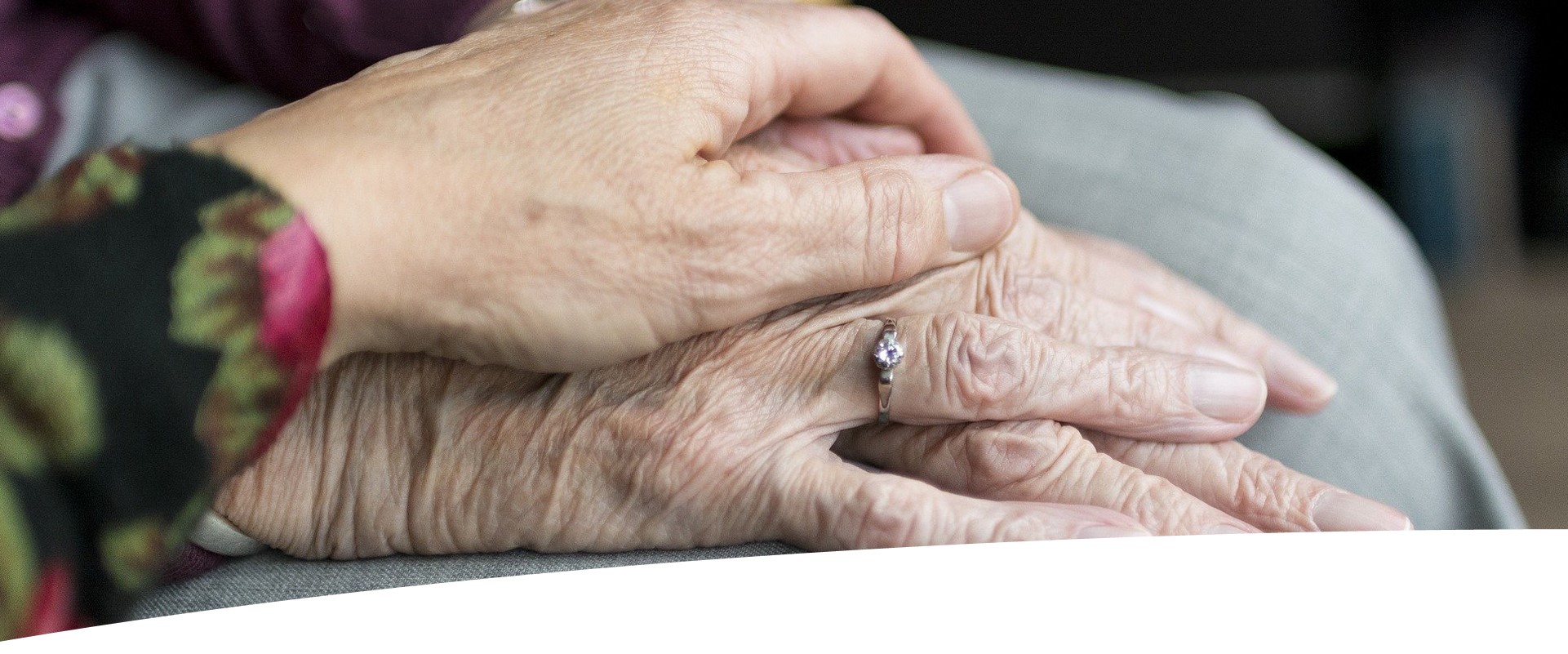
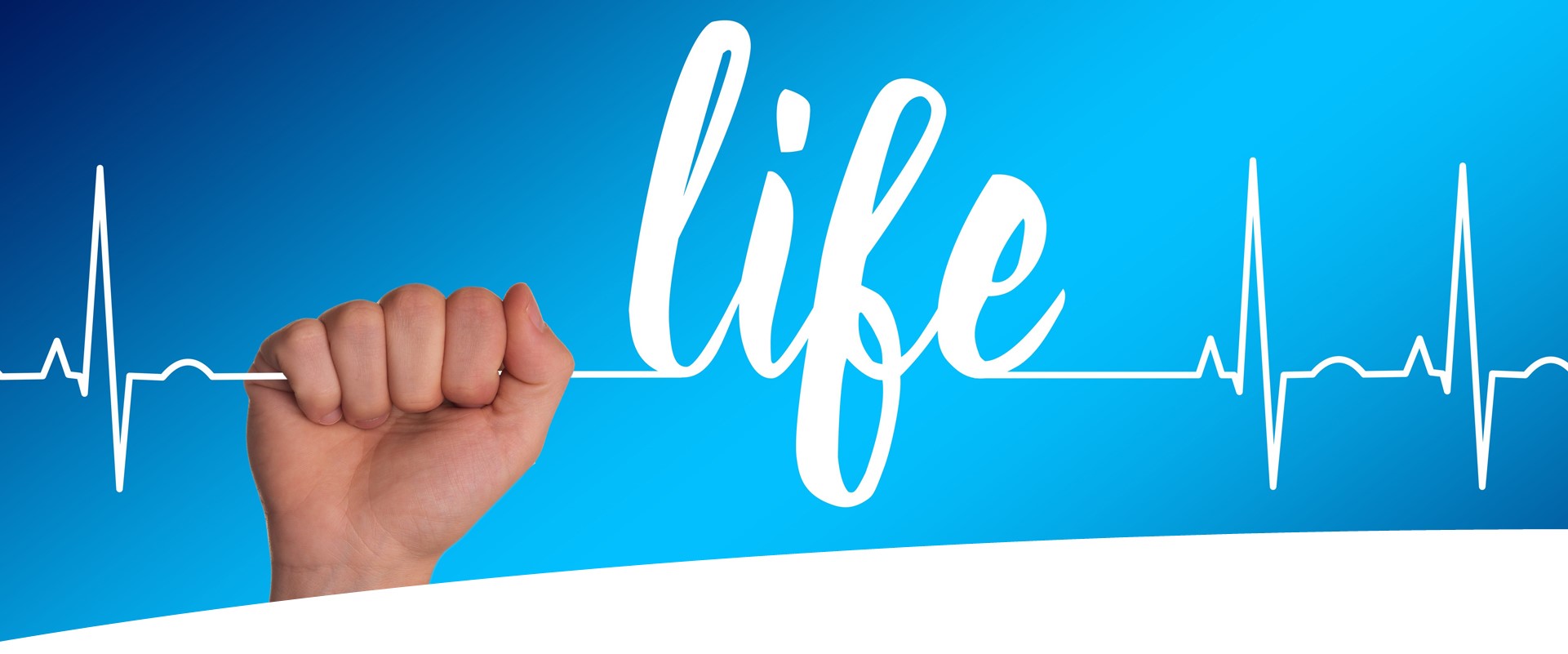




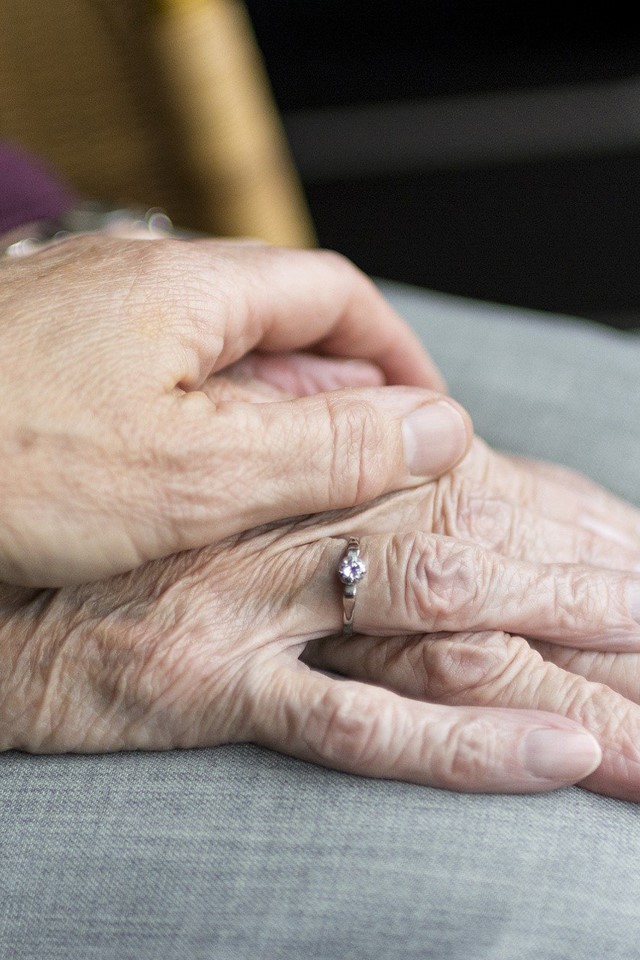

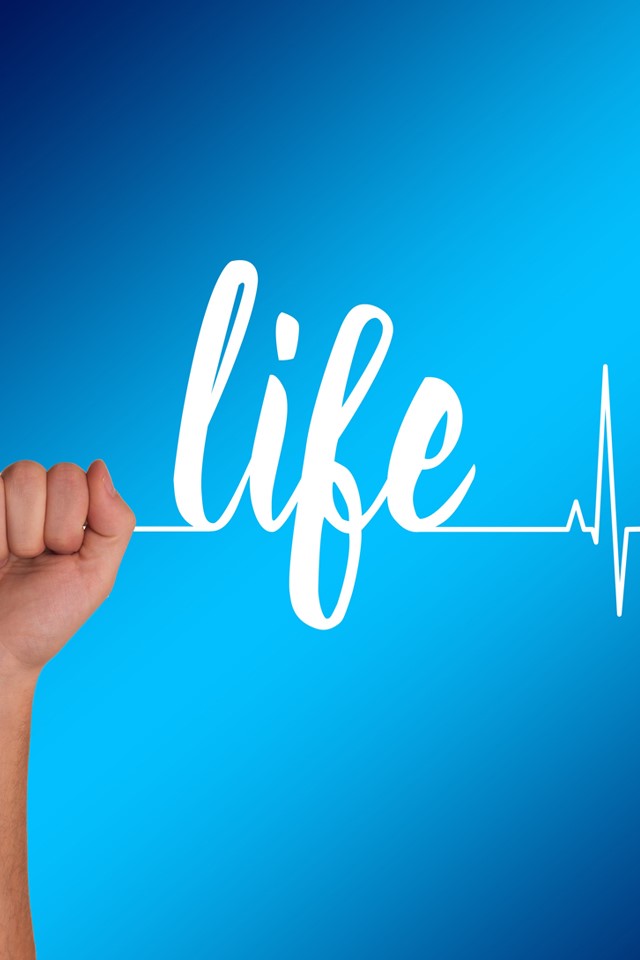


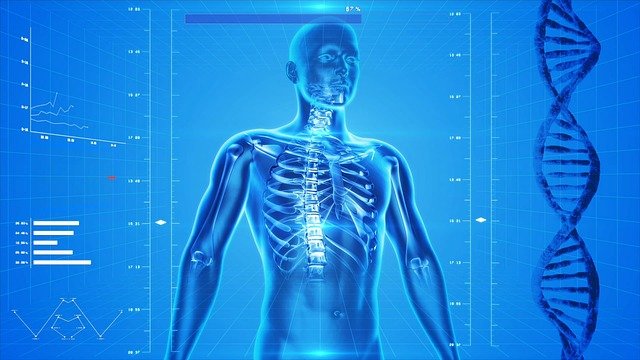

 Web Design: www.superiorweb.net
Web Design: www.superiorweb.net